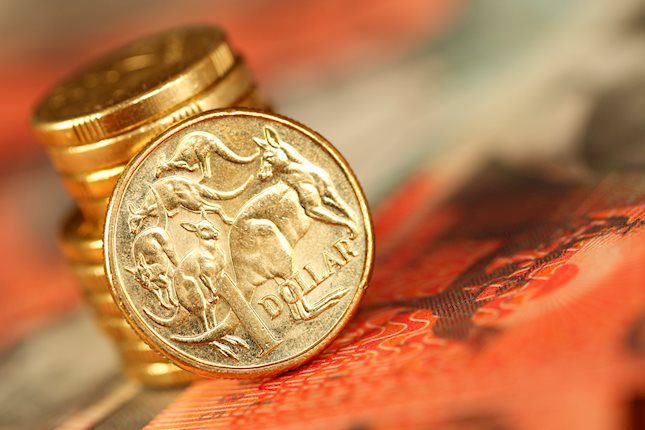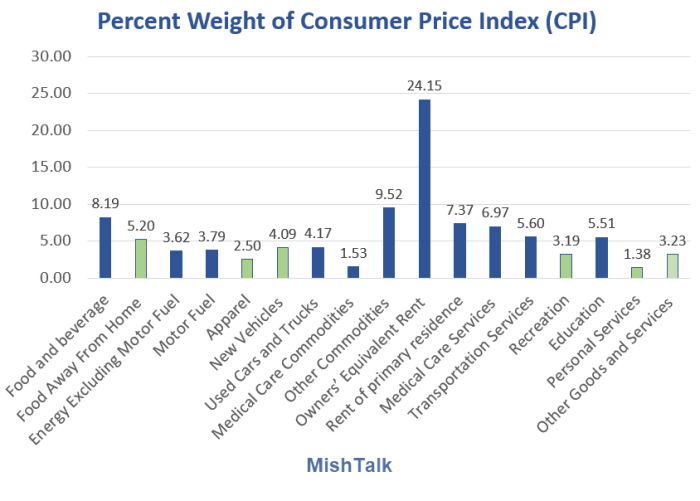After years of misguided attempts to force inflation higher, the Fed succeeded. Now the Fed is chasing its tail again.
Reducing elevated inflation ‘is of paramount importance’
At a virtual conference on April 5 Fed vice-chair nominee Lael Brainard discusses a Variation in the Inflation Experiences of Households
Today, inflation is very high, particularly for food and gasoline. All Americans are confronting higher prices, but the burden is particularly great for households with more limited resources. That is why getting inflation down is our most important task, while sustaining a recovery that includes everyone. This is vital to sustaining the purchasing power of American families.
It is of paramount importance to get inflation down. Accordingly, the Committee will continue tightening monetary policy methodically through a series of interest rate increases and by starting to reduce the balance sheet at a rapid pace as soon as our May meeting. Given that the recovery has been considerably stronger and faster than in the previous cycle, I expect the balance sheet to shrink considerably more rapidly than in the previous recovery, with significantly larger caps and a much shorter period to phase in the maximum caps compared with 2017–19. The reduction in the balance sheet will contribute to monetary policy tightening over and above the expected increases in the policy rate reflected in market pricing and the Committee's Summary of Economic Projections. I expect the combined effect of rate increases and balance sheet reduction to bring the stance of policy to a more neutral position later this year, with the full extent of additional tightening over time dependent on how the outlook for inflation and employment evolves.
The Employment Act of 1946 called on the federal government to promote "maximum employment, production, and purchasing power."
Ghosts of former Chairs Volcker and Burns
Brainard offers quotes by Paul Volcker and Arthur Burns.
- Forty years ago, Paul Volcker noted that the dual mandate isn't an either-or proposition and that runaway inflation "would be the greatest threat to the continuing growth of the economy… and ultimately, to employment."
- Arthur Burns noted in the late 1960s that "there can be little doubt that poor people…are the chief sufferers of inflation."
That was one of the most disingenuous Fed speeches in history.
Yes, it's absolutely true that the poor are the chief sufferers of inflation. Yet, for nearly two decades the Fed was worried about having too little inflation.
On promoting higher costs
Is inflation a risk? Not now, but some see danger ahead
Flashback March 1, 2021: Is Inflation a Risk? Not Now, but Some See Danger Ahead
- "The prevailing zeitgeist is all about accepting and even being enthusiastic about higher inflation,” said Larry Summers in one of the few things I agree with Summers about.
- Julia Coronado, an economist who runs the research service MacroPolicy Perspectives, expects core inflation to fall to 1.2% by the end of the year.
- Fed Chair Jerome Powell recently noted that unemployment had fallen to 3.5% just before the pandemic. This “did not result in unwanted upward pressures on inflation, as might have been expected,” he said in a speech. “In fact, inflation did not even rise to 2% on a sustained basis.”
- “We should be less fearful about inflation around the corner and recognize that that fear costs millions of jobs—millions of livelihoods, millions of hopes and dreams,” Mary Daly, president of the Federal Reserve Bank of San Francisco, said in February.
- Jared Bernstein, a member of Mr. Biden’s Council of Economic Advisers, said the administration believes the risks of high and persistent unemployment, hunger, eviction and other fallout from Covid-19 without stimulus outweigh the risks of inflation with stimulus. That doesn’t mean that the risk of inflation is zero. “It does mean we have a central bank laser-focused on maintaining anchored inflation expectations to guard against that risk.”
- Vice Chairman Richard Clarida has said the Fed will consult a rule he and two other academics developed in a 1999 paper. When inflation persists above the 2% target, rates will eventually rise by 150% of the difference. So if actual and long-run expected inflation hit 3%, this rule would ultimately prescribe interest rates at 4%. That should damp spending and inflation.
- In 2010, Olivier Blanchard, former chief economist at the International Monetary Fund, suggested a higher target, such as 4%, would mean higher interest rates over time and thus more room to cut to counteract recessions.
- “For a quarter of a century, all of the pressures were…pushing downward on inflation,” Mr. Powell told Congress last week. “Inflation dynamics do change over time, but they don’t change on a dime.”
Economic illiteracy
Those are the economic illiterates guiding our policy. The comment by Mary Daly is especially amusing.
But also note Vice Chairman Richard Clarida, absurd proposal: "When inflation persists above the 2% target, rates will eventually rise by 150% of the difference."
Inflation is 8.0%, not counting home prices and dramatically understating rent.
Let's do the math on Clarida's brilliant paper: ((8-2) * 1.50) = 9.
Clarida proposes the Fed will have to hike to 9% to curb inflation. What a hoot.
Pop the bubbles
Bill Dudley, Former President of the Federal Reserve Bank of New York, says If Stocks Don’t Fall, the Fed Needs to Force Them
Rest assured, Dudley never said anything remotely like that when he was president of the New York Fed.
Inflation expectation asininity by Barkin
What can the Fed do about the price of food, medicine, gasoline, or rent?
CPI Weights from BLS chart by Mish
On March 20, I asked What Can the Fed Do About the Price of Food, Medicine, Gasoline, or Rent?
The answer is nothing or next to nothing. Rates hikes will not impact inelastic items.
What the Fed can and cannot do
- The Fed cannot directly influence the price of anything because it cannot produce either goods or services.
- The Fed can reduce or increase demand where demand is elastic by raising or lowering the cost of money.
Elastic vs inelastic demand
- Elastic items total only 19.59%.
- Inelastic items total a whopping 80.41%.
This is why inflation Expectations theory the Fed abides by is total nonsense.
People will not rent two homes if they perceive prices will rise. Nor will people stop paying rent and wait for declines in they believe prices will fall.
The same applies to buying food, gas etc.
Stupidity well-anchored: Absurdity of inflation expectations in graphic form
I discussed the silliness of inflations expectations theory in Stupidity Well Anchored: Absurdity of Inflation Expectations in Graphic Form
Inflation expectations Q&A
Q: If consumers think the price of food will drop, will they stop eating out?
Q: If consumers think the price of food will drop, will they stop eating at home?
Q: If consumers think the price of natural gas will drop, will they stop heating their homes and stop cooking to wait for the event.
Q: If consumers think the price of gas will drop, will they stop driving or not fill up their car if it is running on empty?
Q: If consumers think the price of gas will rise, can they do anything about it other than fill up their tank more frequently?
Q: If consumers think the price of rent will drop, will they hold off renting until that happens?
Q: If consumers think the price of rent will rise, will they rent two apartments to take advantage?
Asset irony
People will rush to buy stocks in a bubble if they think prices will rise. They will hold off buying stocks if they expect prices will go down.
People will buy houses to rent or fix up if they think home prices will rise. They will hold off housing speculation if they expect prices will drop.
The very things where expectations do matter are the very things the Fed ignores.
Demand destruction will occur in the small subset of elastic items plus housing and stocks.
Except as related to recreation and eating out, rate hikes will not impact food, energy, or shelter, the overwhelming majority of the CPI.
Finally, please note A Fed Economist Concludes the Widely Believed Inflations Expectations Theory is Nonsense
Here we are with Powell, Barkin and other Fed presidents putting a spotlight on expectations, having ignored the third massive stock market bubble in just over 20 years.
Meanwhile, "there can be little doubt that poor people…are the chief sufferers of inflation."
Here's the deal in a nutshell: The Fed actively promotes inflation while pretending to be inflation fighters. Yet, people listen to these clueless jackasses as if they know what they are doing.
This material is based upon information that Sitka Pacific Capital Management considers reliable and endeavors to keep current, Sitka Pacific Capital Management does not assure that this material is accurate, current or complete, and it should not be relied upon as such.
Recommended Content
Editors’ Picks

AUD/USD attempts a bounce above 0.6700 on China's stimulus optimism
AUD/USD attempts a modest bounce above 0.6700 in Asian trading on Thursday\ The pair cheers a risk-on market profile, induced by hopes of China's fiscal stimulus package and efforts to boost local equity markets. A broad US Dollar also aids the Aussie's uptick ahead of key US CPI data.

USD/JPY holds pullback from two-month highs, defends 149.00
USD/JPY defends 149.00, stalling its retracement from the highest level since mid-August at 149.36. The BoJ rate hikes uncertainty and a generally positive risk tone cap gains for the safe-haven Japanese Yen while traders look to the US CPI data for fresh impetus.

Gold hangs near the multi-week low, holds above $2,600 ahead of US CPI
Gold price consolidates its recent losses to a nearly three-week low, though it holds above the $2,600 mark during the Asian session on Thursday. The USD sits near its highest level since August 16 amid diminishing odds for a more aggressive policy easing by the Fed, which undermines the non-yielding yellow metal.

US government charges notable crypto companies, individuals for market manipulation and fraud
The US government took legal action against three crypto firms and 15 individuals on Wednesday for market manipulation and fraud, including artificially inflating cryptocurrency prices to make profits.

RBA widely expected to keep key interest rate unchanged amid persisting price pressures
The Reserve Bank of Australia is likely to continue bucking the trend adopted by major central banks of the dovish policy pivot, opting to maintain the policy for the seventh consecutive meeting on Tuesday.

Five best Forex brokers in 2024
VERIFIED Choosing the best Forex broker in 2024 requires careful consideration of certain essential factors. With the wide array of options available, it is crucial to find a broker that aligns with your trading style, experience level, and financial goals.




